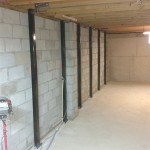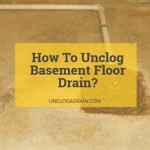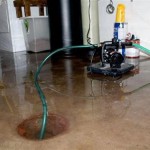Essential Aspects of Choosing the Best Moisture Absorber for Basements
A damp basement can lead to numerous problems, including mold growth, musty odors, and structural damage. Fortunately, a moisture absorber can effectively combat these issues by removing excess moisture from the air. Here are some essential considerations when choosing the best moisture absorber for your basement:
Capacity: The capacity of a moisture absorber determines the amount of moisture it can absorb before requiring a refill or replacement. Choose a model with a capacity appropriate for the size of your basement. Consider factors such as the square footage and the humidity levels.
Type: Two main types of moisture absorbers are available: desiccant and refrigerant. Desiccant absorbers use a material like silica gel or activated charcoal to absorb moisture. They are ideal for areas with low humidity levels. In contrast, refrigerant absorbers use a compressor and refrigerant to condense moisture from the air. They are more efficient and suitable for areas with higher humidity levels.
Run Time and Power Consumption: The run time of a moisture absorber indicates the number of hours it can operate continuously. Choose a model with a run time that meets your needs. Also, consider the power consumption of the unit, as this will impact your energy bills.
Noise Level: Some moisture absorbers can produce noise, especially refrigerant models. If noise is a concern, choose a model with a low noise level. This is particularly important if you plan to place the absorber in a living area or near bedrooms.
Features: Look for additional features that can enhance the functionality of your moisture absorber. These may include an automatic shutoff when the tank is full, an adjustable humidity setting, and a built-in hygrometer to monitor the humidity levels.
Maintenance: Moisture absorbers require regular maintenance to ensure optimal performance. Desiccant absorbers typically require refills or replacements, while refrigerant absorbers may require periodic cleaning. Choose a model that is easy to maintain.
Price: Moisture absorbers vary in price depending on their capacity, type, and features. Determine your budget and choose a model that offers the best value for your needs. Consider the cost of refills or replacement filters as well.
By considering these essential aspects, you can choose the best moisture absorber for your basement and effectively combat moisture-related problems. A dry and comfortable basement will not only improve your living conditions but also protect your property from damage.

Camco Moisture Absorber Reduce Humidity In Rvs Boat Cabin Bathroom Closet Basement And More Multicolor 44280 Walmart Com
The Best Moisture Absorbers To Prevent Mold Mildew And Allergens From Taking Over Your Home

Damprid Fg50t Review Disposable Moisture Absorber

720ml Condensation Remover Moisture Absorber Dehumidifiers For Damp Mould Home Kitchen Wardrobe Bedroom Caravan Office Garage Bathroom Basement Dehumidifier And New Absorbent Price Made In Com

Damprid 11 Oz Lavender Vanilla Moisture Absorber Refill Fg01lvsb The Home

Damprid 46 2 Oz Lavender Vanilla Hanging Moisture Absorber In The Absorbers Department At Lowes Com

Damprid 44 Oz Fresh Scent Moisture Absorber Refill Fg30fssb The Home

Camco Moisture Absorber Reduce Humidity In Rvs Boat Cabin Bathroom Closet Basement And More Multicolor 44280 Walmart Com

10 Best Selling Basement Dehumidifiers For 2024 The Jerusalem Post

14 Oz Refillable Arm Hammer Absorber Tub The Container Store
Related Posts







